Spotting patterns in football: An easy step by step process
I wanted to work out the best way to practice the weaker aspects of my opposition scouting. I came up with some short, easy drills, and was surprised by the results...
After two weeks of trying to calculate the very best way to study football and improve myself as an opposition scout, I gave up. Or at least I gave up trying to find the perfect method. There is no perfect method.
So I asked myself a different question: What is the single main thing I need to improve on?
I boiled it down to this:
Pattern recognition that leads to predictive insight
With that in mind what could I do to make some progress?
I knew I needed something to meet the following criteria:
Quick. Done in 15 minutes or less.
Simple. No charts or spreadsheets.
A visible and visceral sense of improvement. I knew from previous experience that if my brain started to think it was wasting its time, it would give up.
And so with a little help from ChatGPT I came up with five drills. Each was short. Each required nothing more than match footage and my laptop. And each came with the sense that it would produce some sort of benefit. Below I’ve outlined the first one. I may write similar articles later on the others. But for the time being this is the only one I’ve tried.
Using drills to spot patterns in play
Pick a 3-5 minute clip of a match. Try to use footage from during the game rather than set pieces. Then watch it all the way through without stopping.
Now go back to the beginning and watch the clip again. Then three further times. On each viewing look for the following:
First look: The goalkeeper and backline
Second look: The Central Midfielder positions and rotations
Third look: Watch the wingers and their relationship with the FB
Fourth look: Watch the reaction of the opponent (pressing, or dropping off)
After you’ve done this note what is consistent across each category. Summarise it in a sentence or two. You can even list any strengths and weaknesses you spotted along the way.
I did this using some clips I’d created from York City’s game away to Rochdale last season.
I picked York because they like to play out from the back. And they were one of the dominant sides towards the end of the National League season. But you can pick any game, even some highlights on YouTube will do.
It was amazing what you could see by looking at one specific area of the game.
At the end of the process, I had insight into what York City's tendencies were. But also who were their key players. And who were their potential liabilities. I also had a useful list of strengths and weaknesses longer than I expected from such a short period.
But this is best explained by seeing it in action. If you’re like me you’ll want to see an example with pictures and notes that make it easier.
So I’ve used still images below to walk through the process, featuring the notes I made while I did so.
Step-by-step of how to spot patterns
So the idea is to watch a 3-5 minute section of a game all the way through. Then go back to the start of the clip and watch it multiple times, focusing on the headings below each time. Starting with…
Watching the goalkeeper and backline
I'm a bit of a fan of the York City keeper Harrison Male.
I first watched him play for Worthing back in the Isthmian Premier Division (Step 3). That was several years ago, shortly after leaving Leeds United. I thought he was excellent then and wasn’t surprised to see him gain promotion with Worthing. Then move up to Dorking Wanderers. And then York City.
He’s good with the ball and sees the game well. The only thing that worked against him was his height. But what he lacked made him a natural shot-stopper.

But watching him working with the back line a few things stood out.
York are a good passing side. They like to keep the ball moving. It’s as though each player has instructions not to keep the ball for longer than two or three seconds.
They keep a uniform shape, with the CBs split and the FBs deep. The defensive midfielder (more on him later) is ready to drop between the CBs to cover the FBs stepping up. The player on the ball almost always has at least one passing option.
The right CB looked uncomfortable if pressed. On one occasion his pass forced a correction from the FB. In another possession, he hit long without looking when pressed. Not enough on its own to suggest a major weakness, but something I’d look out for during the rest of the game.
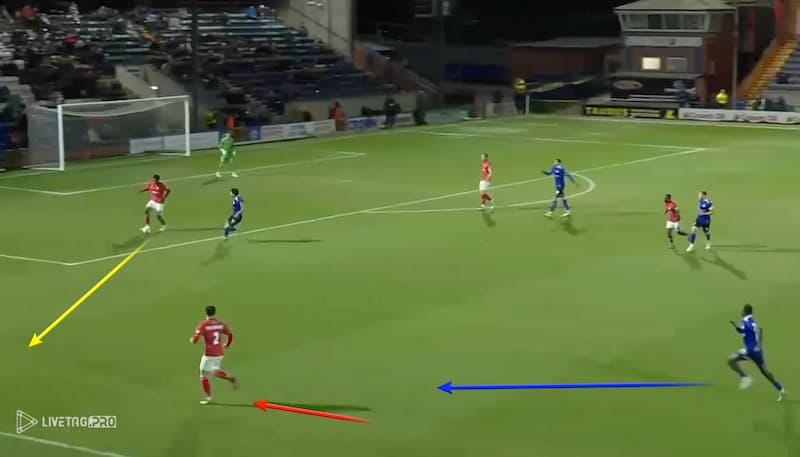
Now rewind the clip and watch it again, focusing on…
Central Midfielder's positioning and rotations
York started with a single pivot against Rochdale's 4-4-2, but soon dropped a holding midfielder to create a double pivot.
Key to this part of the game was Alex Hunt. He looked key to York’s build-up play. He’s quick, always looking to get into space, always looking to receive, and always scanning.
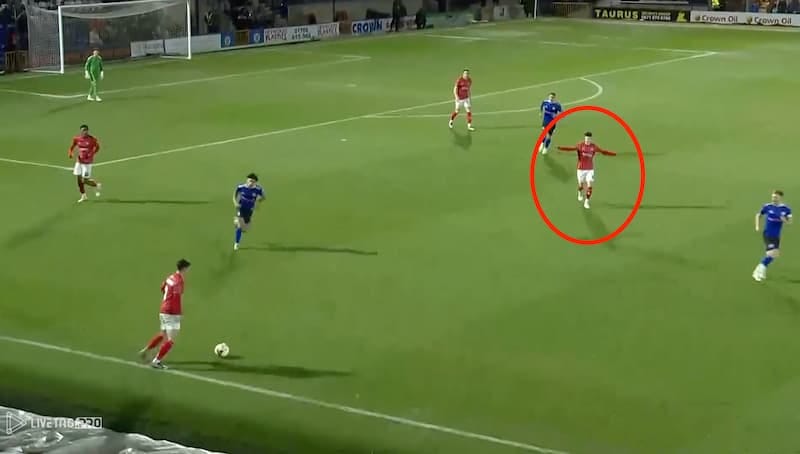
He was a target for passes inside from the FB. Or from the keeper behind the front line of defenders. From there he would play forward or pick out longer passes in behind the defence.
If they used a double pivot Hunt would stay central while the holding midfielder would support play either side. And if York found themselves 2v2 in the centre either one of the inverted wingers would drop, or the right back would invert to create an overload.
Back to the start again. This time watch…
Winger and Full Backs
With the full backs wide the wingers tended to drift into the half spaces, either side of the ten. Both fullbacks made attacking runs, often both getting into the final third at the same time. This would leave a 2-1 rest defence, with Hunt in front of the two CBs. So a big threat in attack that forced Rochdale to defend deep.
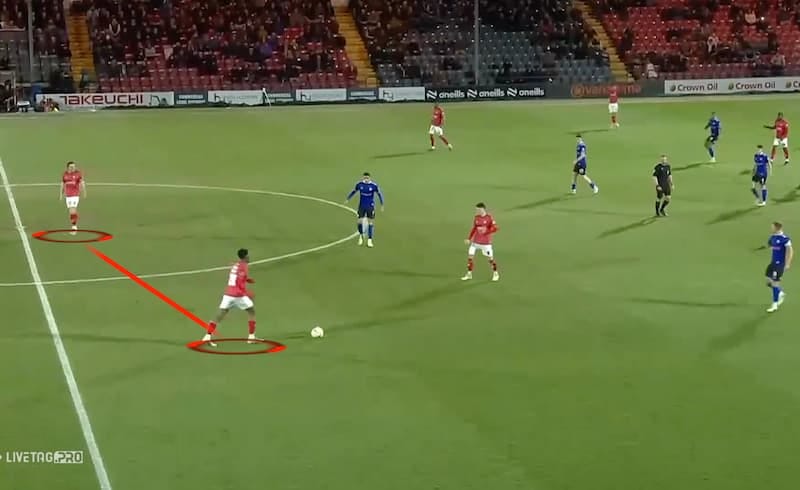
Now watch it one more time and note…
Opposition reaction
It was Rochdale's pressing of Hunt that prompted York to create a double pivot early on. This gave him time to either create space for team mates, or pick out passes forward.
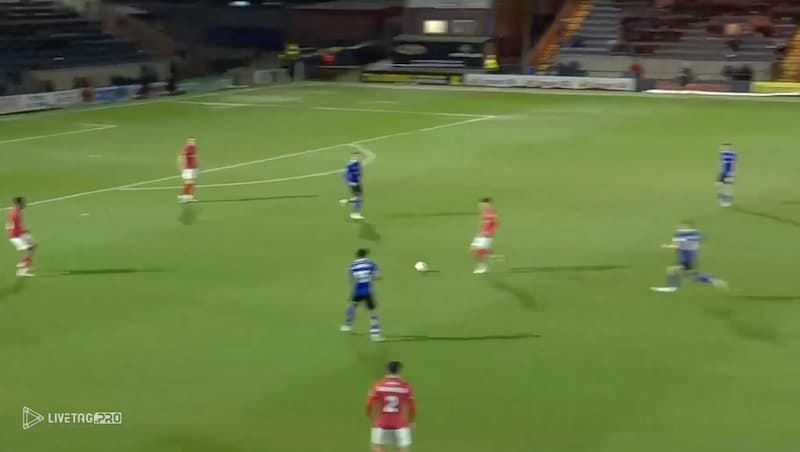
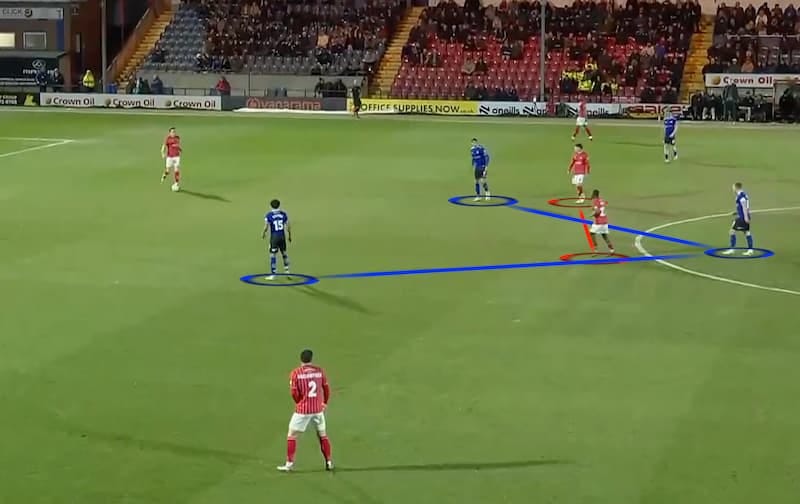
Hunt would also cause Rochdale problems on restarts by starting inside the box. He'd receive the first pass from the keeper, then act as a third man, receiving in space (although the execution was sometimes lacking).
Finally, the attacking runs from the FBs forced the Rochdale winger to play deep. He was often caught overloaded on his side.
Those were all my notes from three minutes of match footage.
Picking out strengths and weaknesses to exploit
So what were those strengths and weaknesses I mentioned? Here’s my quick list:
York City’s strengths
Lots of support for passes in buildup. They keep the ball moving, never allowing the opposition a moment to rest or regroup.
They are adaptable and use several patterns. Dropping the DM, inverting the fullback to create overloads.
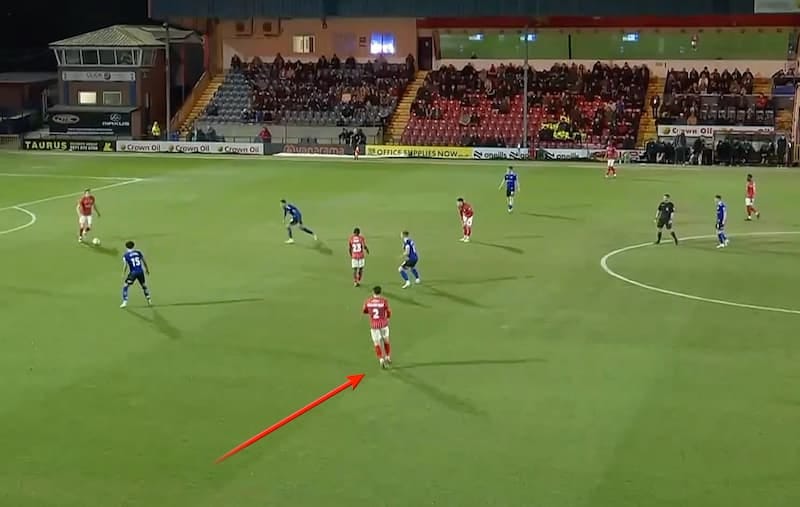
The role of Alex Hunt is key. A threat on the ball and always a pass option.
They get lots of players forward in attack with their FBs making attacking runs. DM Hunt stays deep between CBs against an opposition front two, creating a 3v2.
York City’s weaknesses
The passing of the right CB might not be terrible, but there were a couple of moments that would put me on alert.
If their build-up patterns break down their shape can leave them exposed in their own half.
Getting lots of men forward leaves them a 2-1 rest defence. That could be vulnerable in transition.
How to use this process in a report
This would be a great start, but I’d want to know more.
I’d want to check out more footage of the right-sided CB. Were those two moments I saw just blips or a habit?
I’d see what happened to Hunt in the DM role if Rochdale changed their approach. Would he be able to adapt and still dominate central midfield?
I’d look beyond these moments to see how they managed in the final third creating chances. With both FBs pushed up what role did they play?
And in transition. Would that rest defence leave them exposed in the way I suspected?
Like I said you can do this with any match footage. The key thing for me is spotting these patterns and things I sometimes miss. These drills gave me an important reminder. I’m looking forward to expanding on them over the summer.
If you give this a try yourself I’d love to hear how you get on.





I love this insight. Look for the detail in a short segment and then see if there is a pattern across the match.